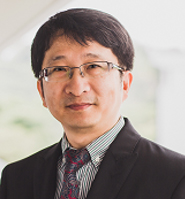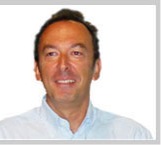Can we trust any photo?
 |
Alex C. KotSchool of EEECollege of EngineeringRapid-Rich Object Search (ROSE) LabSingapore |
Abstract & Biography:
With the fast proliferation of digital cameras and other image acquisition devices due to the advancement in digital photography technology, photos from the public may have good news values for making journalist reports. However, one big challenge is how to authenticate the photo contents from the public, which may come from unreliable sources. A large variety of forensics works have been proposed to address various forensic challenges based on different types of tell-tale signs. This talk introduces several techniques for: (1) Accurate detection of image demosaicing regularity as a general type of image forensics features. (2) Identification of various common image source models including digital still cameras, RAW conversion tools and the low-end mobile cameras; (3) Universal detection of a wide range of common image tampering and (4) Prevention of the image recapturing threat. These techniques help expose common image forgeries, especially those easy-to-make forgeries, which can be hardly seen directly by human eyes. The common theme behind these forensics techniques is through statistical detection of some intrinsic image regularity or tampering anomalies.
Prof. Alex Kot has been with the Nanyang Technological University, Singapore since 1991. He headed the Division of Information Engineering for eight years before serving as the Vice Dean Research for the School of Electrical and Electronic Engineering. He is currently Professor and Associate Dean for College of Engineering. He is the Director of Rapid-Rich Object SEarch (ROSE) Lab. He has published extensively in the areas of signal processing for communication, biometrics, data-hiding, image forensics, information security. His new research area is in the domain object search and recognition.
Dr. Kot has served as Associate Editor for 9 IEEE Transactions and Journals including Signal Processing, Image Processing, Multimedia, Signal Processing Letters, Signal Processing Magazine, and Information, Forensics and Security. Dr. Kot has served the IEEE SP Society in various capacities such as the General Co-Chair for the 2004 IEEE International Conference on Image Processing (ICIP) and as a member in the IEEE Fellow Evaluation Committee. He now serves as the Vice-President for the IEEE Signal Processing Society. He is a member of IEEE SPS Board of Governors. He received the Best Teacher of the Year Award and is a co-author for several Best Paper Awards. He was the IEEE CASS Distinguished Lecturer in 2005 and 2006, IEEE SPS Distinguished Lecturer in 2014 and 2015, and is a Fellow of IES, a Fellow of IEEE, and a Fellow of Academy of Engineering, Singapore.
Quantitative Bioimage Analysis: from cell to numbers
 |
Jean-Christophe Olivo-MarinBioimage analysis unit
Institut Pasteur
ParisFrance |
Abstract & Biography:
An increasing number of biological projects aim at elucidating the links between biological function and phenotype through imaging and modelling the spatiotemporal characteristics of cellular or organism dynamics. This requires the automatic quantification of dynamics parameters and the characterization of phenotypic and morphological changes occurring during of such diverse events such as cell motility, host/pathogen interaction, organism development or social interactions between animals. We will present and discuss some recent developments of algorithms and software for robust quantitative assessment of 2D/3D+t dynamic bioimaging data. We will also demonstrate on a number of examples how the use of these tools to extract quantitative data from bioimages has enabled the understanding of biological information contained therein.
Jean-Christophe Olivo-Marin is the head of the BioImage Analysis Unit and the Director of the Center for Innovation and Technological Research at Institut Pasteur, Paris. He chaired the Cell Biology and Infection Department (2010-2014) and was a cofounder and CTO of the Institut Pasteur Korea, Seoul (2004-2005). Previous to that, he was a staff scientist at the European Molecular Biology Laboratory, Heidelberg (1990-1998). He received the PhD and HDR degrees in optics and signal processing from the Institut d’Optique Théorique et Appliquée, University of Paris-Orsay, France. His research interests are in image analysis of microscopy images, computer vision and motion analysis for cellular dynamics, and in mathematical approaches to biological imaging. He is a Fellow of the IEEE, a Distinguished Lecturer of the SP Society, a Senior Area Editor of the IEEE Signal Processing Letters, and a member of the Editorial Board of the journals Medical Image Analysis and BMC Bioinformatics. He was the general chair of the IEEE International Symposium on Biomedical Imaging (ISBI) in 2008, and is presently the chair of the ISBI Steering Committee.
Patterns and disorder in chaos: A nonlinear approach to improve image analysis
 |
Odemir M. BrunoUniversity of São Paulo
Institute of Mathematics and Computer Sciences
São PauloBrazil |
Abstract & Biography:
Chaos theory is a field of mathematics that studies the behavior of dynamic systems sensitive to initial conditions. The deterministic chaos, is directly related to complex systems and nonlinear dynamics. Although most classical phenomena described in nature can be expressed as linear systems, various phenomena are better understood using the nonlinear dynamics. This is the case of many biological phenomena and structures that can be found from neuron networks to plants. The successful application of chaos and fractals to model landscapes and other natural structures is well known and used in computer graphics. In such cases, the elementary rules of fractals are used to generate patterns that resemble those found in nature. Notably, in biology there are a large number of structures that can be better modeled using fractal geometry. This suggests that life uses a similar approach to composing their complex structures. In this presentation, we will show how the study of patterns and disorder in chaos and in complex systems can improve image analysis and pattern recognition. We will show applications placing particular interest in biological images.
Odemir M. Bruno is an Associate Professor at the Physics Institute of São Carlos at the University of São Paulo in Brazil. He is head of the Scientific Computer Group and vice head of the Department of Material Sciences. He received his B.Sc. in Computer Science and his Ph.D. in Computational Physics at the University of S. Paulo (Brazil). He is an author of about hundred papers in journals and several book chapters. He is a co-author of two books and an inventor of seven patents. His fields of interest include Computer Vision, Image Analysis, Chaos, Fractals, Computational Physics, Pattern Recognition and Bioinformatics
Advances in Face Analysis and Beyond
| |
Abdenour HadidSenior ResearcherCenter for Machine Vision and Signal AnalysisUniversity of OuluFinland |
Abstract: Traditional problems in face analysis include the analysis of 2D/3D images for face detection and recognition, facial landmark localization, facial expression recognition, gender and age estimation etc. Significant progress has been achieved in these problems and many commercial systems can already be found in the market. This presentation will discuss some new and appealing problems in face analysis including kinship (family) verification from facial images, health diagnosis from faces, 4D (3D+time) face analysis, spontaneous and micro-expression analysis, face spoofing detection etc. In terms of features and representations, the current tendency is toward using automatically learned features e.g. using deep learning instead of using hand-crafted features. This talk will hopefully be an opportunity for brainstorming around these recent advances in face analysis and beyond.
Short Bio:
Abdenour Hadid received the Doctor of Science in Technology degree in electrical and information engineering from the University of Oulu (Finland) in 2005 and the Professional Specialization Studies in Business Engineering from Oulu University of Applied Sciences in Finland in 2008. Since 2010, he is an Adjunct Professor (Docent) and senior researcher in the Center for Machine Vision Research of the University of Oulu. He made significant contributions to the state-of-the-art and his work is gaining increasing interest in the scientific community. According to Google scholar (September 2015), his h-index is 25 and his work is already cited more than 6000 times. He lectured many invited talks and tutorials in international events (e.g. FG2011, ICIAP2011, ACCV2009, ICPR2008 etc.). He was a work package leader in the FP7 EU project TABULA RASA dealing with vulnerabilities of different biometric systems under spoofing attacks. He co-organized the first Algerian summer school on biometrics in Algiers in 2010. He is the tutorial chair of IPTA2012 and IPTA 2014 conferences and the main organizer of many workshops (ACCV/LBP2012, ECCV/LBP2014, ECCV/Soft Biometrics 2014 etc.). He has been visiting the Institute of Automation at the Chinese Academy of Science (Prof. Stan Li) in spring 2006, the Institute of Industrial Science at the University of Tokyo (Prof. Y. Sato) in summer 2009, the Eurecom Institute at Sophia Antipolis (Prof. J-L Dugelay) in summer 2010, the University of Cagliari (Prof. F. Roli) in fall 2011, the university of Valenciennes in France (Prof. A. Taleb-Ahmed) in summer 2013 and the university of Montreal in Canada (Prof. E. Granger) in summer 2014.
